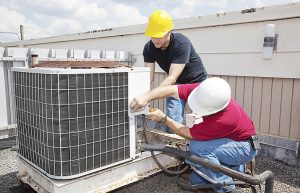
Heating systems are responsible for controlling and regulating the various components of machineries, signaling when to turn on and off. From your standpoint, the thermostat is the most important control as it turns the distribution system on and off to ensure comfort. In choosing the heating system that suits you best, there are a lot of factors to be considered such as features, size, energy-efficiency, price, and benefits. Your preference, allotted space, type of machinery you wish to have a heating system must also be taken into account.
This is to ensure that the unit you chose really suits you or if it is the best choice for you that fits your liking budget and if it coordinates with your plans. Sizing is very important in choosing a heating system. There are some heating systems that are really big, but that does not mean they are better than the smaller ones and its thermostat is right.
In addition to managing the temperature of your home, the thermostat assists with improving indoor air quality by addressing issues such as poor ventilation and high humidity levels. With poor ventilation, air stays in the home, which leads to other problems such as mold and mildew.
High humidity levels increase the quantity of microscopic organisms (e.g., bacteria and fungi), including disease-causing bacterium, in your home. A dirty filter exasperates the problem as the contaminants in the dirty filter spread throughout the house. A maintenance plan will tackle important tasks such as replacing air filters, monitoring ventilation, etc.
Today’s thermostats go above and beyond managing your temperature settings. You can also use your thermostat to address home comfort issues like humidity levels in the house. In the hot, damp Floridian climate, this is a prime concern. Lowering humidity in the home can instantly make the space feel cooler, creating a more comfortable feeling throughout your home.
Check out full article here.
Heating systems come in different shapes and sizes. They vary in features, process, how they work, installation, and many more aspects. One thing’s for sure, they all have different levels of technology and have various features that make each and every appliance or product unique.
Heating systems are divided into three main types, namely the Central Heat, Direct Heat and State of the Art Cooling. Under these types, there’s what we call subtypes. Furnaces, boilers and heat pumps, some of the simplest forms of heating system fall under central heat. Direct Heat includes Gas-Fired Space Heaters, Electric Space Heaters and a lot more. For the state of the art heating, however, it includes radiant heating and many more examples.
With any new heating system, proper sizing is important to ensure efficient operation and comfort. Contractors often install larger systems than are really needed, either to avoid callbacks or to compensate for poor distribution systems or inefficient insulation. Most heating systems are most efficient when they run for longer periods of time. An oversized system will meet the demand for heat more quickly, but may never reach its peak operating efficiency.
Before installing a new system, ask your contractor to perform a heating load calculation, which takes into account square footage, insulation levels, air tightness, window orientation and other factors that affect the amount of heat needed.
Read full article at Energy Depot.
To learn how heating systems work in commercial buildings check this out:
